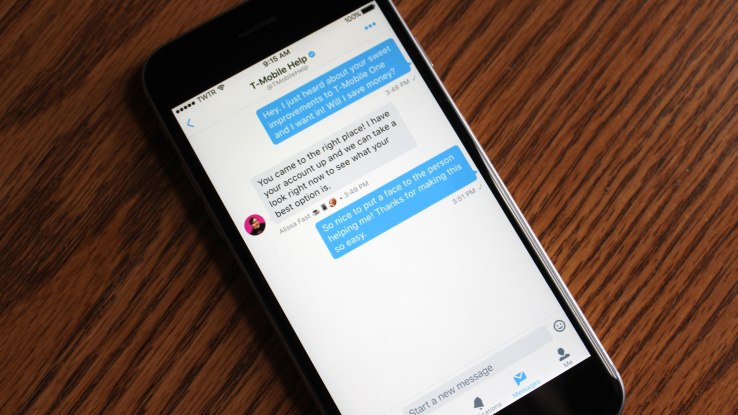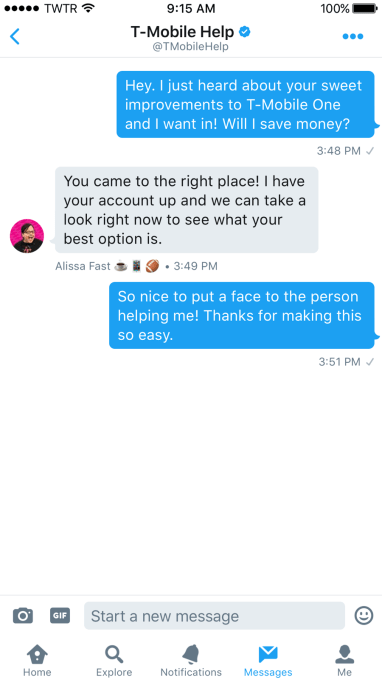

Twitter this morning is launching a new customer service feature for businesses using its service, which will allow agents to respond to direct messages using custom profiles. That is, their names and profile pictures will display when they are engaged in conversations with customers, instead of the company’s Twitter photo and name. The idea is to give these service interactions a more personal feel, so customers know they’re talking to a person and not a bot.
The first business to adopt the new feature is T-Mobile, which has been at the forefront of personalizing the customer service experience, Twitter explained. T-Mobile was one of the first to use customers’ real names and customer service agents’ initials in tweets, for example, and last year it began adding agents’ pictures and names to its tweet replies by linking to custom bio web pages for each of its agents.
Starting today, the account @TMobileHelp will be the first to be able to use the new custom profiles in its Direct Messages (DMs) as well. However, Twitter tells TechCrunch that others businesses will roll out the feature soon.

Customer service agents can also get creative by adding emoji to their Twitter names, which do display in group DM conversations. You can see how this looks in the screenshot below.
There are no limits on how many custom profiles a business can operate, nor does the business have to be of a certain size in order to take advantage of the feature. The only requirements are that the business has a verified handle, is whitelisted. To get on the list, the businesses can sign up on the form here, after receiving verification.
There is no charge to use the feature, nor the API that’s also being made available. Though businesses would need to work Twitter’s partners in order to access the API, of course.
The feature is the latest in a series of steps Twitter has taken to enhance its customer service offerings for businesses, which have also included things like making it easier for customers to Direct Message businesses through more prominent buttons, the ability for businesses to add a “send a private message” button to tweets, automated messages for DMs, a way to display support hours on a business’s profile page, and more.
According to Twitter’s own research, customers who receive responses to inquiries are willing to spend 3 to 20 percent more on an averaged priced item from that business in the future, and 10 percent more, specifically, on telco. (Hence T-Mobile as a launch partner.)
In the telco industry, Twitter says customers are willing to pay $17 more per month for their phone plan if they receive a reply within 4 minutes, but are only will to pay $3.52 more if they wait over 20 minutes. These figures explain why a business like T-Mobile would be so interested in rolling out improvements to their Twitter-based customer service as soon as they become available.
More generally, Twitter says that 77 percent of consumers are likely to recommend a brand after receiving personalized customer support; are 19 percent more likely to feel like they reached resolution; and are 22 percent more likely to be satisfied compared with those who had less personal interactions.
The new feature is live for sign-ups here, and the API is now in private beta.

